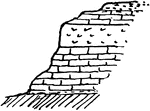
Willow Canker
"Scleroderris fuliginosa. a, immature ascocarps ... S. fuliginosa is said to be parasitic on twigs and…
Willow Canker
"Scleroderris fuliginosa. b, ascus containing spores and accompanied by paraphyses ... S. fuliginosa…

Riddle Seal
The riddle in this "Riddle-seal of Oxford" is an 'ox' crossing a 'ford.' "A seal which contains a rebus,…
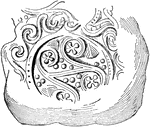
Vase Sealing
"Ancient Cretan sealing. An impression in clay used to seal vases and other receptacles, examples of…

Pendulum Seismograph
"inverted Vertical Pendulum Seismograph. Marvin System. A stiff vertical tube, pivoted at its bottom…

Motto Label
The motto label is a found on the seal of the town of Schiltach, Germany. It has a Gothic inscription…

Early Gothic Finial
This early gothic finial is a 13th century three dimensional cross. Made out of stone, it decorates…
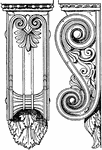
Greek Console
The Greek console is shown in the front and side view. It is found as a support to the North door of…
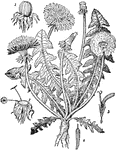
Dandelion
Taraxacum is a large genus of flowering plants in the family Asteraceae. They are native to Europe,…

Heartsease
Heartsease (Viola tricolor) is a common European wild flower, growing as an annual or short-lived perennial.…
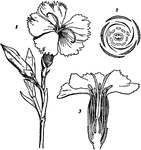
Dianthus
Dianthus is a genus of about 300 species of flowering plants in the family Caryophyllaceae, native mainly…

Beaumaris Castle
Beaumaris Castle, located in Beaumaris, Anglesey, Wales was built as part of King Edward I's campaign…

Amiens Cathedral
The Cathedral of Our Lady of Amiens (French: Cathédrale Notre-Dame d'Amiens), or simply Amiens…

Temple of Theseus
The Temple of Hephaestus and Athena Ergane, also known as the Hephaisteion or Theseion, is the best…

Fumitory
Fumaria is a genus of about fifty annual herbaceous flowering plants in the family Fumariaceae, native…

Fumitory (Side-view)
An illustration of the side-view of the fumitory flower Fumaria is a genus of about fifty annual herbaceous…

Fumitory Flower (Longitudinal Section)
An illustration of a longitudinal section of the fumitory flower. Fumaria is a genus of about fifty…
Fumitory Flower Anther
An illustration of a fumitory flower anther. Fumaria is a genus of about fifty annual herbaceous flowering…
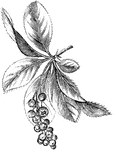
Berberis
An illustration of a berberis branch. Berberis (Bér-be-ris, barberry, pepperidge bush) a genus…
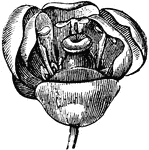
Berberis Flower
An illustration of the berberis flower. Berberis (Bér-be-ris, barberry, pepperidge bush) a genus…
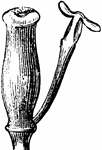
Pistil and Stamen of Burberis
An illustration of the a stamen and pistil of the berberis plant. Berberis (Bér-be-ris, barberry,…

Fruit of Berberis
An illustration of the berberis fruit. Berberis (Bér-be-ris, barberry, pepperidge bush) a genus…
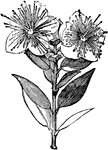
Myrtle
The Myrtle (Myrtus) is a genus of one or two species of flowering plants in the family Myrtaceae, native…

Beech
An illustration of a flowering branch and empty cupule of beech. Beech (Fagus) is a genus of ten species…
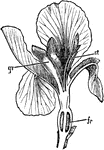
Iris
Iris is a genus of between 200-300 species of flowering plants with showy flowers. It takes its name…

Bearded Seal
The Bearded Seal (Erignathus barbatus) is a seal in the Phocidae family of true or earless seals.

Monkwearmouth Church
Monkwearmouth is an area of Sunderland located at the north side of the mouth of the River Wear. It…

Hepatica
An illustration of liverwort (Hepatica): a, Thalloid stem with female branches; b, Thalloid stem with…
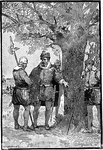
Croatan Carved into Tree at Roanoke
John White finds the only clue to the disappearance of the "Lost Colony" of Roanoke: a tree carved with…

Medieval Helmet with Fan Crest
"Fan-crest, about 1350. A form of crest common in the middle ages at different periods, as in the reign…

Interior of Fort Garry
Fort Garry, also known as Upper Fort Garry, was a Hudson's Bay Company trading post at the confluence…
St. Gothard Massif, Switzerland
North-south cross-section of the St. Gothard Massif, Switzerland, showing the fan-folds.

North Hill Overthrust
Section through North Hill, Kingston, N.Y. showing the overthrust which led to a repetition of the strata.
New York Peneplane
North-south section across western New York, showing the three cuestas and lowlands and the tilting…
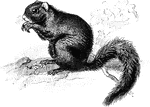
Black Fox Squirrel
The Fox Squirrel (Sciurus niger) is a rodent in the Sciuridae family of squirrels. The black fox squirrel…

Northern Fur Seal
The Northern Fur Seal (Callorhinus ursinus) is large seal in the Otariidae family of eared seals.
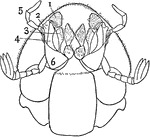
Ventral View of Dung Beetle
"Under Surface of Head of Tumble-bug (Copris carolina), about four times natural size. 1, galea; 2,…

William Penn
William Penn (October 14, 1644 – July 30, 1718) was founder and "Absolute Proprietor" of the Province…

Ostrich
"Struthio camelus, the Ostrich or "Camel-bird" of North Africa now extends from Barbary to Arabia, and…

Kiwi
Kiwi, Apteryx australis, of the South Island, is lighter (than the Apteryx mantelli of North Island),…

Little Grebe
"Both sexes of the Little Grebe are mainly dusky brown or blacking grey above, and silvery white below,…

Rhine River
The Rhine River begins in Switzerland and flows through Germany and the Netherlands before emptying…
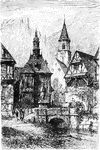
Black Forest Village
View of a village in the Schwartzwald, or Black Forest. The Black Forest stands in the elbow formed…
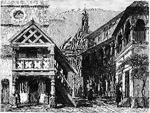
Town of Oberkirch
Oberkirch is a manufacturing town in Western Baden-Württemberg, Germany about 12 km North-East…
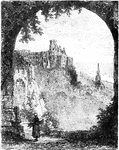
Heidelberg Castle Viewed from Terrace
View of the castle framed by an arch. A landmark of Heidelberg, the castle ruins are among the most…
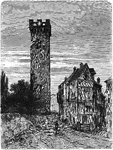
Tower of Goetz
Located in Heilbronn, a city in the north of Baden-Wirttemburg, Germany, is the tower of an old fortress…
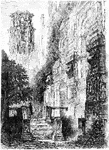
Entrance to Heidelberg Castle
A landmark of Heidelberg, the castle ruins are among the most important Renaissance structures north…
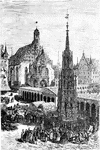
Nuremberg
A market place in Nuremberg. Nuremberg, a city of the Middle Ages, is filled with works of art of the…

City, Passau
Passau is one of the oldest cities in Germany, a village of Gauls in early days; and later, a Roman…

View of Lintz
A picturesque view of the Lintz (Linz) city center. Lintz was founded by the Romans, who called it "Lentia."…
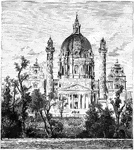
Church at St. Charles Borromeo, Vienna
The Karlskirche (German for St. Charles's Church) is a church situated on the south side of Karlsplatz,…

Storm Petrel Swimming with Reflection
The storm Petrel "of the Mediterranean and North Atlantic from Greenland to South Africa, which breeds…

Tropic Bird Sitting on a Ledge
The Tropic Bird " are chiefly found in the tropical regions of the south; ... this species breeds as…

Gannet
"The Gannet (S. bassana) has slate-grey wing-quills, purplish-grey bill, reddish feet and naked parts."…

Cormorant
The Cormorant "P. carbo, but has a tuft of long narrow recurved plumes on each side f the crown in the…

